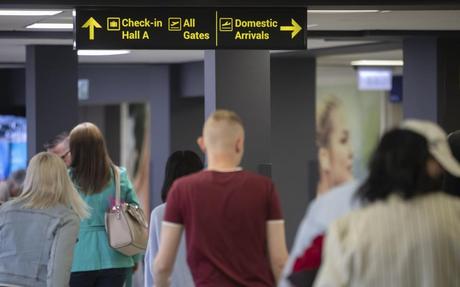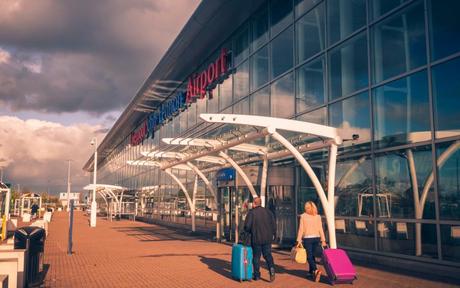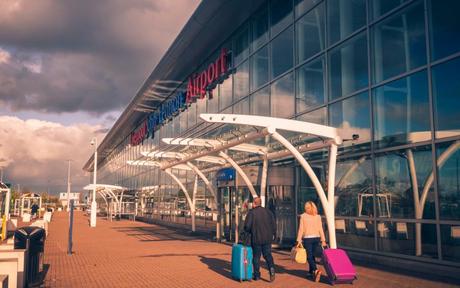
Queues at passport control, long waiting times for luggage and crowded airport lounges. Britain's biggest terminals - Gatwick, Heathrow, Manchester - may have the most routes, but their size can lead to a whole host of problems. Enter regional airports. These overlooked basics may not immediately come to mind when booking a holiday, but they have quietly revolutionized the way we travel. And now the major operators are taking notice. Ryanair will offer flights from Norwich Airport for the first time next year, with flights to Alicante, Faro and Malta on Mondays and Fridays.
Wartime origins
There are technically fifty UK airports that are considered 'regional' as the term refers to any airport outside London with passenger services. Their remarkable rise largely began during World War II. Most - such as Speke (now Liverpool John Lennon), Horsham St Faith (now Norwich), St Mawgan (Cornwall Newquay) and Eastleigh Airfield (Southampton) - were RAF bases, used as bomber stations during the war and, in the case of Speke, a 'shadow factory' for production.


Many of these air bases were transferred to local administrations or fell under government control in the late 1940s, being restructured to serve a commercial market. Passengers flew from Norwich to Amsterdam; from Plymouth to Chambery. Bournemouth was, remarkably, for a time 'London's airport'. In 1946, Pan Am began flights from its terminus to New York five days a week. The journey took almost 18 hours.
In fact, this model of using dubiously located 'city airports' is in regular use in Europe today. For example, Ryanair's base in Milan is about 45 kilometers outside the city, near Bergamo. This practice allows airports to avoid the dangers of being in a major city - namely dislocating residents and the inability to grow - and reduces costs. But in Britain, Bournemouth never really managed to compete with London's offerings, and smaller airports fell out of fashion in the second half of the twentieth century.
The story continues
Introduction of cheap routes
The limiting factor for regional airports is of course the number of flight routes. Heathrow currently offers 214 destinations in 84 countries, which the smaller airports cannot compete with. However, the early 2000s presented an opportunity in the form of low-cost airlines. In Bournemouth the number of routes increased from 14 to 18 in 2009, taking passengers to destinations such as Malaga in Spain and Faro in Portugal via budget providers. There was optimism about Bmibaby operating from the airport and Flybe briefly starting services. However, that initial interest was put to an end by the financial crisis: airlines went bankrupt and running an airport became increasingly precarious. By 2011, Air Southwest had withdrawn from Plymouth, and the popular airport closed down.
But despite declining passenger numbers, most regional airports have survived. In 2011 Bournemouth served 613,755 passengers. Like most smaller airports, numbers have held steady, although some - such as Blackpool, which closed in 2014 - never recovered. However, it was the pandemic that became the biggest threat. As Flybe went bankrupt and passenger numbers dried up, the future of terminals such as East Midlands, Birmingham and Belfast City were thrown into doubt. Doncaster-Sheffield, which had served 1.25 million passengers in 2016, closed at the end of 2022, with the airline's collapse cited as a key factor.
"There have always been challenges," says Andrew Boomer, Director of Operations at Newquay Airport. 'There was the Gulf War, and then foot and mouth disease, which devastated the region. All these things tested us, but I think the pandemic was a big blow."
Post-pandemic optimism
However, that trend began to change. The closure of Doncaster-Sheffield helped nearby Leeds Bradford, where Wizz Air and TUI transferred their flights. Last year, passenger numbers at Exeter Airport exceeded 50,000 in August for the first time since before the pandemic - despite Flybe accounting for 80 per cent of its turnover. And Newquay now has 21 routes in use.
"Regions are proud of their airports," says Andrew Bell, CEO of the Regional and City Airports Group, which operates Bournemouth, Norwich, Exeter and Coventry.
"You see it most vocally and most publicly when one of them is in danger," he continued. "It's like a much larger version of the village pub or the post office. If you have one, you want to make sure you keep one because they don't build them anymore.
In fact, global events were a major turning point for Newqay. The 2021 G7 Summit was hosted in Carbis Bay, with world leaders landing at the airport ahead of the conference. Air Force One was photographed on the runway and Andrew Boomer commented that it "put them on the map."
Competition from large airports also seems to be a welcome challenge. The most dramatic moments of travel chaos this summer affected all airports equally, but other factors, such as train strikes, meant that airports with car access had a little more flexibility.
An alternative to major airports
"The USP of a regional airport is that it gives people the opportunity to travel in a much easier way," says Andrew Bell. "If you live locally, you can travel to a whole range of destinations in a much shorter and more comfortable journey than via a larger airport.
"All the processes and the sheer size of the larger airport inherently make that whole experience more difficult and time-consuming. So it gives people quite an attractive option: we'll be able to look after them in a much more personalized way than a much larger airport would."
Then there are domestic flights, which have offered a more flexible option in a year marked by rail strikes. The much-derided air travel tax was also reduced earlier this year, making domestic air travel cheaper. As train fares rise, the number of people interested in domestic flights is likely to increase. For the South West, this could mean flying from Newquay to Gatwick - there are three flights a day - but domestic flights are also looking to change the way people connect to larger airports that offer more routes. So rather than traveling by car or train to London or Manchester for an international flight, Newquay positions itself as a 'gateway' to other destinations, providing connecting flights to the two major cities.


Both representatives were keen to point out to Telegraph Travel that sustainability is an important consideration. Andrew Bell said airports have a responsibility to take the environment into account, while Andrew Boomer pointed to developments in sustainable aviation fuel as a possible solution. Both also emphasized that their airports are not exclusively concerned with transporting holidaymakers. Their support functions, they argue, are extremely large, with the number of people they employ being crucial to the local economy. In Bournemouth, around 300 staff work at the airport, with a further 4,000 working at companies on campus.
"It's a magnet for economic activity," says Andrew Bell. "Regional airports have the space and flexibility to offer themselves as a place to innovate." Training pilots and ground crew, developing aircraft design and carrying out aircraft maintenance; it all takes place at Britain's smaller airports.
Granted, it's early days. The ongoing impact of the pandemic means that the revival of passenger numbers must be handled with caution. Still, airports are optimistic, promising improved facilities, faster services and expanded routes. And the local demand seems to be there; campaigns in Plymouth and Doncaster Sheffield could eventually lead to them reopening. So we may be on the cusp of a regional airport revival.
"The use of these airports has adapted and streamlined as the market, fashion and airlines have changed," says Andrew Bell. "But they persist."
